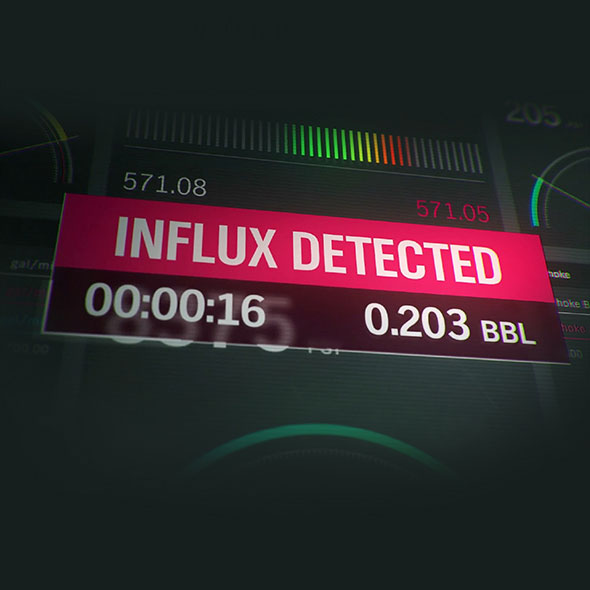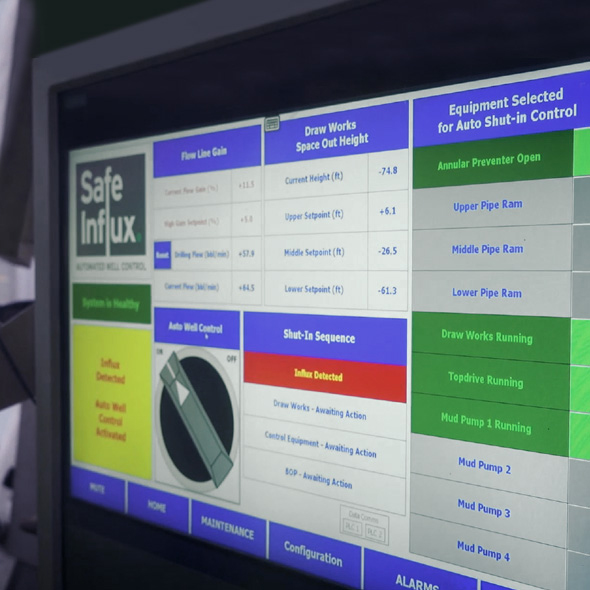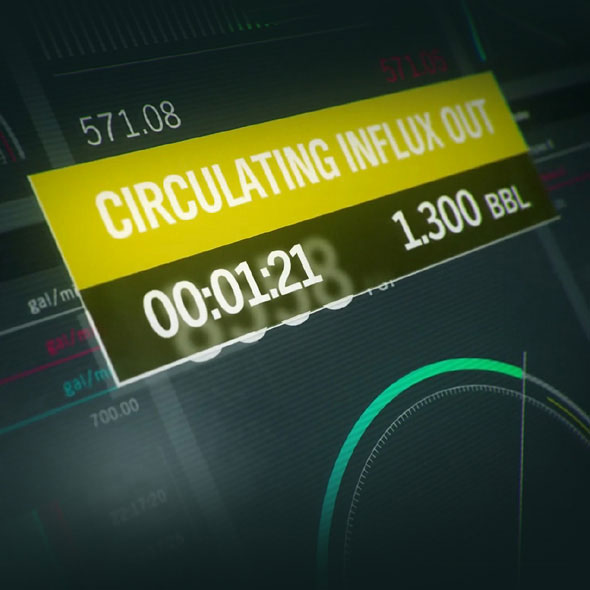Automated Well Control
Reinforce your response
Weatherford harnesses the power of digitalization and automation to reinforce your capabilities for influx management even further in the well lifecycle. As a result, you have more control over kicks for safe execution of operations, efficient returns to productivity, and minimal risks to the balance sheet.
Unlike other technologies that only detect kicks and warn crews of influxes, our solution automates the entire transition from the primary to secondary well barrier. Making the handover process as quick and seamless as possible keeps influxes to gallons instead of barrels and mitigates kicks in minutes rather than hours. Regardless of the level needed for managing influxes, you can achieve a performance-enhancing response according to your predetermined protocol.
Detect kicks early
Our MPD solutions enable detecting and reacting to kicks before they can present threats to well integrity, dangers to personnel safety, or damages to the environment. A quick response keeps the influx size to a minimum, which lowers pressure and gas flow rates, requires less time to mitigate, and facilitates a safe, fast return to well construction operations.

Shut in automatically
Applicable to any of our MPD solutions, the Safe Influx system activates the secondary well control barrier without human intervention. If an influx exceeds the limits of the primary barrier, it automates the space-out and shut-in process to always keep the well under control, which avoids the potential for secondary influxes and lessens the time to close the well and circulate out influxes. In fact, tests have shown that automating in this way results in shut-in five times faster than conventional human interface methods.

Mitigate influxes intelligently
After the onset of a kick or loss event, our intelligent MPD system accelerates the return to operations. The proven system determines the required amount of backpressure to apply from the surface within seconds before reaching the threshold kick tolerance size. It then circulates out the influx at a full rate within operational limits, which reduces or eliminates the need to activate the secondary barrier and follow conventional well control procedures.

